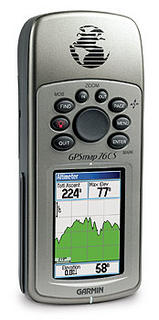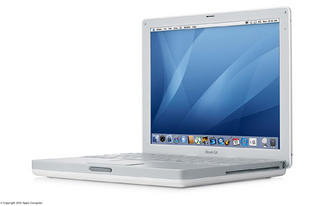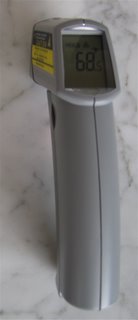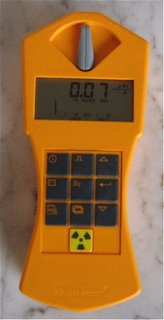While in Eugene Oregon we stayed at the King Estates Winery. Director of Sales, Steve Thomson loaned me a book about the founder Ed King Jr. Ed was a friend of Bill Lear, the inventor of the Lear Jet. He told some amazing flying stories. One aviator friend of Ed's ran out of fuel but was able to land his Lear Jet "dead stick" that is without power from over 50 miles away from the airport.
Mr. King was an active pilot for forty years and flew his own jet until age 71. He is very proud to have assisted the Rutan Brothers in accomplishing their dream of circumnavigating the globe by airplane on one tank of fuel. Using King's products exclusively for navigation, flight control and communication, their Voyager aircraft flew around the globe on one tank of fuel in 1986. The King name is proudly emblazoned on the side of the Voyager which now hangs in the Smithsonian Air and Space Museum in Washington, D.C.
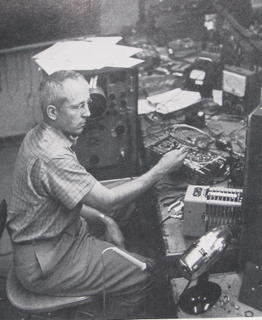
(Ed King Jr. hand testing his radios)
The King Story
Someone once said that the greatest inventions come from creative, free thinkers who haven't been told that "it couldn't be done" by experts. In a way, this is how King Radio Corporation was born. In 1952 Ed King Jr. fulfilled a lifelong desire by earning his private pilot's license. However, for King a 1943 Kansas State University graduate in electronic engineering, was only the beginning of an interest in aviation that would eventually lead to King Radio Corporation.
Ed, who owned and flew a Beechcraft Bonanza for pleasure, quickly became dissatisfied with the poor quality radio gear offered to the private pilot in the early to mid-50s. The best selling NAV/COMM on the market at that time offered a continuously tuned receiver and only 27 transmit channels, and still priced well over $1000. King knew there had to be a way to build a low cost NAV/COMM that offered the same optional features that the expensive airline equipment provided. However, as a president of his own highly successful electronics company, Communications Accessories Corporation, he just didn't have the time to do anything about it, so it took a back seat to other business interests.
Finally, in 1956 Ed sold Communications Accessories Corporation to Collins Radio and agreed to stay on and manage the company. Between 1956 and 1959 king tried to interest Collins in light aircraft avionics designed with some of the same features as the expensive airline equipment. However, Collins was heavily involved in the growing airline business and couldn't spare the time or manpower to pursue the light aircraft avionics products.
As a result, in 1959 Ed King left Communications Accessories Corporation and formed King Radio Corporation where he designed and handmade the first low cost 90 channel crystal controlled VHF transceiver for light aircraft. That same year he sold five units to private customers for $845 each. Since his model had a lower price and far better performance than comparable radios of its day, Ed had no trouble finding customers and well established agents willing to sell and service his product so Ed set up for "mass" production in an old dairy farmhouse on the outskirts of Kansas City, with production and shipping on the ground floor, engineering and testing on the second floor, and service parts in the attic.
In February 1960, King had 30 employees and production was on the rise. By 1961, King Radio Corporation had moved out of the farmhouse to a plant in Olathe, Kansas, and continued to climb to become a major factor in the light aircraft avionics field. The KY 90 VHF COMM Transceiver soon had the reputation of providing crystal clear communications, and was installed in almost every type of American-made light aircraft, including such famous aircraft builders as Cessna, Piper and Beachcraft. With the success of the KY 90, King quickly introduced compatible navigation receivers and was soon able to offer a complete line of Navigation/Communication.
The creative atmosphere at King Radio has yielded many important firsts. King brought the first all solid-state transceiver for airline use to the market in 1966, the KTR 900: the first digital ADF for general aviation, the KDF 800, in 1969; and the first low cost all solid-state TSO'd VHF NAV/COMM unit, the KX 175, in 1970. The company also pioneered the use of digital frequency synthesizers which replaced bulky crystal banks in NAV/COMM units and allowed the widespread use of 720/200 channel NAV/COMM's in general aviation. King has led the industry in the design of Large Scale Circuits (LSI chips), small chips about 3/32" square which do the same work of literally hundreds of transistors. The subsequent use of LSI technology in various systems has resulted in a significant operational and cost break-through while reducing the size and weight and increasing the reliability of new avionics systems.
In the process of striving to respond to more needs of general aviation and the airlines, King has experienced rapid growth in its 25 years since Ed King hand-built the first King radio. It is estimated that King has invested more in research and development for general aviation electronics than any other company in the industry. While sales were continually increasing, King enlarged its manufacturing facilities in Kansas, Its present headquarters in Olathe, Kansas, plus a facility at nearby Johnson County Industrial Airport and plants in three other cities in Kansas, occupy a total of 557,000 sq. ft. of space. Employment has increased from 30 in 1960 to 2,850 in 1984.
As growth in the general aviation industry began to level off, King embarked on a bold diversification plan. This began with the formation of King Marine Radio Corporation in Clearwater, Florida. From its inception in late 1981, King Marine has grown steadily to establish a firm position in the competitive marine electronics market. In addition, King began an aggressive plan to penetrate the military avionics field. The high value of King products and the strong engineering and technical base were responsible for a number of military contracts, and today military avionics make up an increasingly larger portion of King business.
During this exciting period of growth and diversification, the avionics product lines were constantly being upgraded with the latest technology. In addition, new products were added, bringing King quality to an ever increasing number of light, commercial, and military aircraft. Today King Radio produces a full range of avionics products, including Communication Transceivers, Navigation Receivers, Automatic Direction Finders, Autopilots, Flight Directors, Airborne Radiotelephones, Air Traffic Control Transponders, Compass and Weather Radar Systems. The company's Silver Crown product line is in its fourth generation and is used in light aircraft while the Gold Crown III product line is in its third generation and is designed for turboprops and business jets. In addition, King also produces five products for commercial airlines. These products are currently being used by more than 141 of the world's leading air carriers.
Each year King Radio has improved the high technology base that supports its diverse product offerings. In 1981 a CAD/CAM computer aided design and manufacturing system was added. This system allows King to develop new products quickly and efficiently. The latest in automatic test and manufacturing equipment was purchased regularly, maintaining King's leadership position in manufacturing technology creates a very fertile environment for new product innovation and assures a promising future for King Radio.
In 1982 a Mobile Communications Division was formed to develop a product line for the rapidly expanding Land Mobile Radio field. A team of top professionals was recruited from the industry to utilize King Radio's high technology base for a bold new line of microprocessor based two-way radios.
The King Mobile Division is housed in a 76,000 sq. ft. facility on a 57 acre tract in Lawrence, Kansas. From this facility will evolve the base for all engineering, marketing and manufacturing efforts.
As is typical of most King innovations, these new mobile handheld portable communications units will bring the very latest in features and technology (frequency synthesizers, keyboard programming, channel scanning, liquid crystal displays) down from the highest price levels into the low-to-medium cost range.
When complete, the line will comprise a full range of mobile units, the base stations and portables, in both VHF and UHF to assemble a complete mobile dispatch system using King Land Mobile equipment exclusively.
The use of advanced C-MOS micro-processor design and automated surface -mount component manufacturing techniques will not only enable King to produce a radio that is smaller, lighter and more reliable than other units on the market today, it also affords some rather significant production economies that can be passed on in the form of lower pricing.
In 1983, King Radio opened a 24,000 sq. ft. engineering and manufacturing facility in Singapore. This facility is presently engaged in major sub-contract work, along with the manufacture of VHF 7000 Transceiver and King 8001 Loran C for the marine market. They presently employ 175.
One has to wonder how a company like King Radio could have flourished amid huge conglomerates with almost unlimited resources. The answer is simple--Ed King and his ability to surround himself with employees possessing the same insatiable desire for excellence. Ed has always seen technological achievement and improved used benefits at reasonable cost as the challenge. According to Ed, "If you have highly innovative, reliable products at competitive prices, a lot of your marketing problems are solved."

(Photo By Camilla McGuinn)
We went from Oregon down through California Wine Country (more in Camilla's Roadie Report) and got to San Francisco just in time to appear on the first live TWIT podcast.
TWIT Podcast No. 21.
I talked about my amazing
Samson C01U USB condenser mic, recording on my iBook using
Audacity the cross platform audio editor, and many other tech related subjects.
 That was cool enough to get me interested in doing more things with photo voltaic panels. I bought a 15 Watt panel from Amazon.com
That was cool enough to get me interested in doing more things with photo voltaic panels. I bought a 15 Watt panel from Amazon.com 

 I tried to charge it with the four 15 Watt panels but they ran the deep cycle battery down every time I tried, so I bought two 64 Watt panels. They were powerful enough to charge the scooter but the panels were lying flat on our driveway and in danger of being run over by various service people who came to the house.
I tried to charge it with the four 15 Watt panels but they ran the deep cycle battery down every time I tried, so I bought two 64 Watt panels. They were powerful enough to charge the scooter but the panels were lying flat on our driveway and in danger of being run over by various service people who came to the house. 



